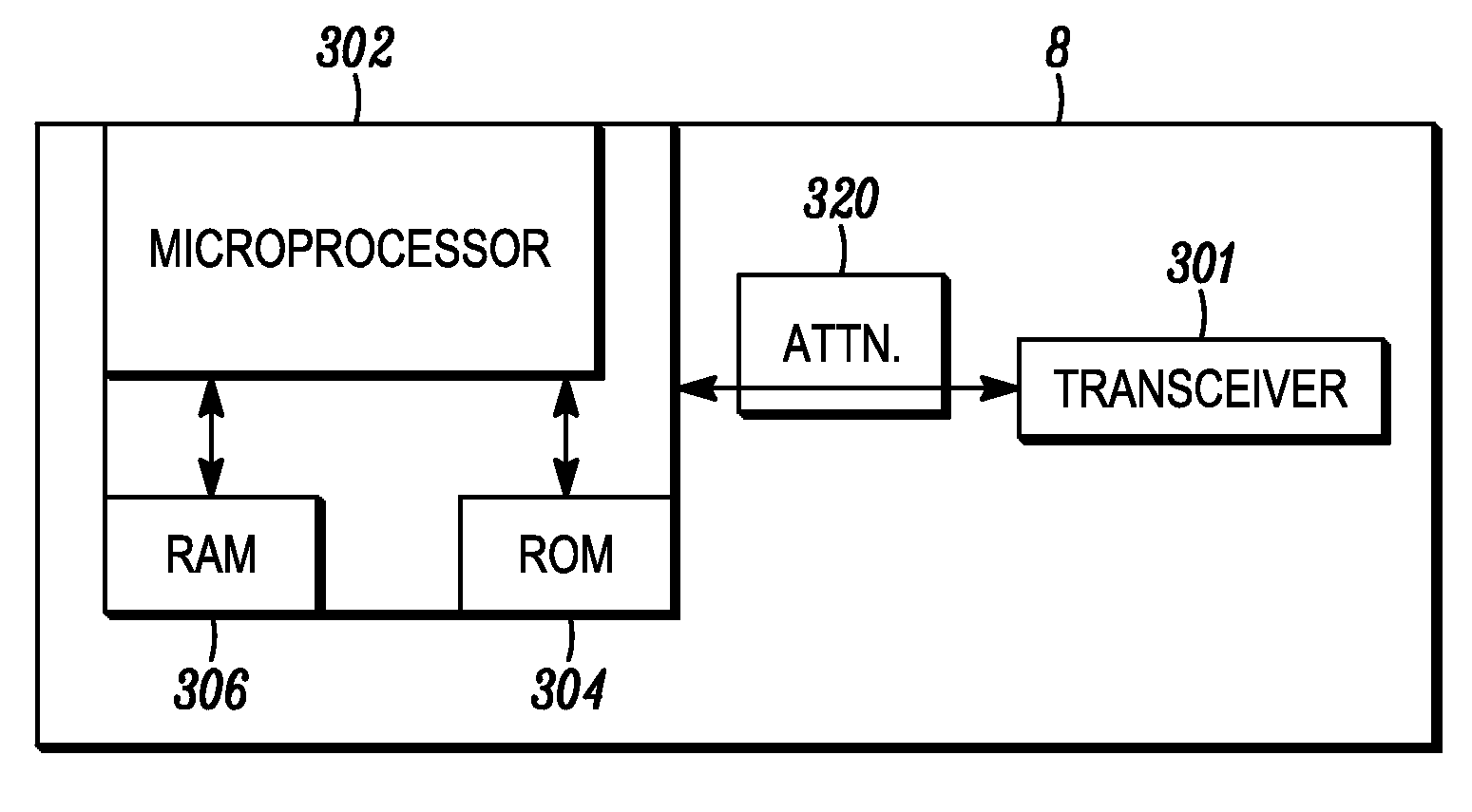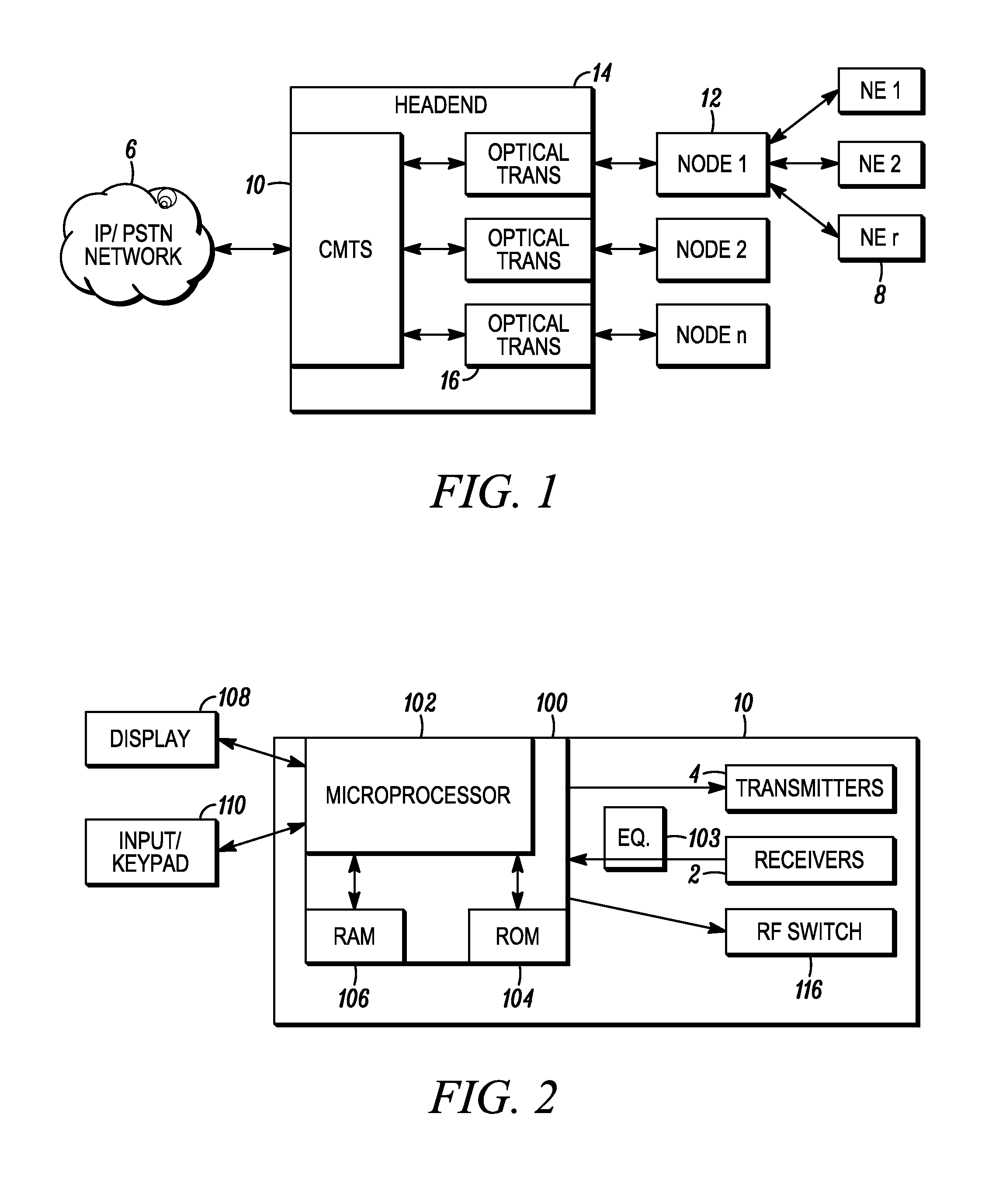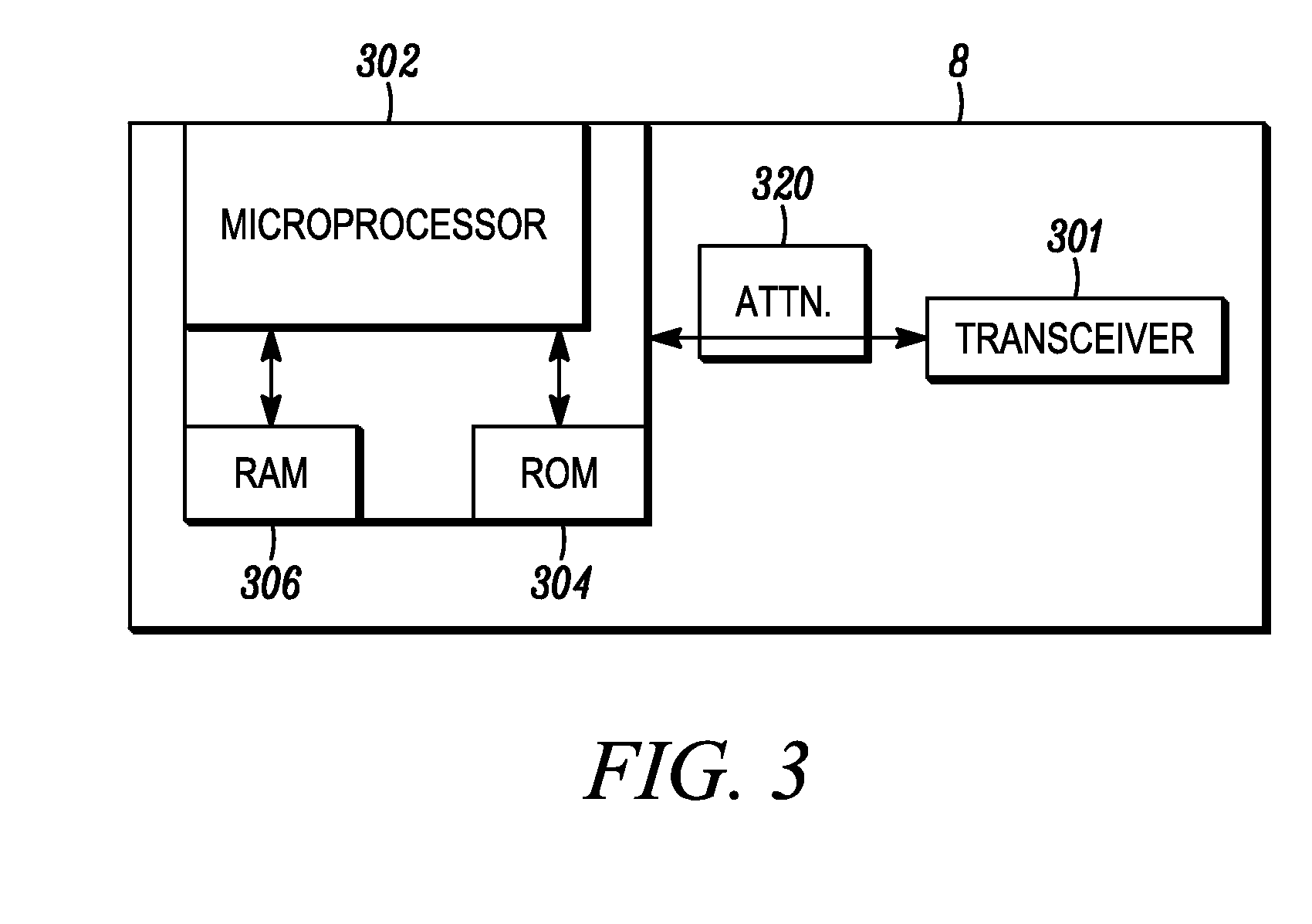Method and apparatus for improving throughput of a modem
a modem and throughput technology, applied in the field of improving throughput, can solve the problems of difficult management and monitoring of complex networks, high cost, and inconvenience of voice or data traffic, and achieve the effects of improving network element throughput, improving data speed, and improving network efficiency
- Summary
- Abstract
- Description
- Claims
- Application Information
AI Technical Summary
Benefits of technology
Problems solved by technology
Method used
Image
Examples
Embodiment Construction
[0023]The invention provides an effective ability to maximize the data throughput of each network element subscriber (and the CMTS total throughput) at the time each network element registers with the CMTS. The CMTS uses logical channels to help perform this task. Network elements are assigned (re-registered), using instructions from the CMTS, such as the upstream channel override protocol, to the logical channel that supports the modulation error ratio (MER) or signal to noise ratio (SNR) threshold that each network element meets or exceeds when it registers. If the network element is already on the correct channel it will remain there. This way the network element is transmitting at its best modulation mode and therefore can maximize its data passing. This algorithm can be performed on any CMTS product used for high speed internet access.
[0024]The network can differentiate cable modems by Modulation Error Ratio (MER) which is a primary determinant in the modulation rate (QPSK, 16Q...
PUM
 Login to View More
Login to View More Abstract
Description
Claims
Application Information
 Login to View More
Login to View More - R&D
- Intellectual Property
- Life Sciences
- Materials
- Tech Scout
- Unparalleled Data Quality
- Higher Quality Content
- 60% Fewer Hallucinations
Browse by: Latest US Patents, China's latest patents, Technical Efficacy Thesaurus, Application Domain, Technology Topic, Popular Technical Reports.
© 2025 PatSnap. All rights reserved.Legal|Privacy policy|Modern Slavery Act Transparency Statement|Sitemap|About US| Contact US: help@patsnap.com



